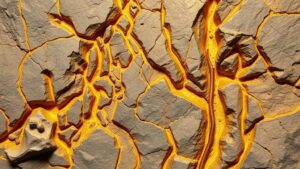Creating a Tunnel Grouting Plan to Prevent Water Seepage
Creating a Tunnel Grouting Plan to Prevent Water Seepage
Tunnel construction presents numerous engineering challenges, one of the most critical being the prevention of water seepage. Grouting is a widely utilized technique to mitigate this issue, ensuring structural integrity and safety. This article outlines how to create an effective tunnel grouting plan, focusing on the selection of materials, methods, implementation, and monitoring practices.
Understanding Tunnel Grouting
Grouting refers to the injection of fluid material into soil or rock formations surrounding a tunnel to improve stability and prevent water infiltration. process involves the use of various materials, typically cementitious grouts, polyurethane-based grouts, or chemical grouts, depending on the conditions encountered during construction.
Key Objectives of a Grouting Plan
- Prevent water ingress into the tunnel structure
- Enhance the stability of the tunnel by filling voids
- Improve the load-bearing capacity of surrounding soils or rock
Site Investigation and Assessment
A successful grouting plan starts with an extensive site investigation to assess geological and hydrogeological conditions. This provides crucial data such as:
- Soil composition
- Rock properties
- Water table level and flow characteristics
For example, a study conducted on the Gotthard Base Tunnel in Switzerland revealed that detailed geological mapping helped identify high-permeability zones that required targeted grouting. This form of assessment minimizes unforeseen complications during construction.
Selecting Grout Materials
Selecting the appropriate grout material is vital for the effectiveness of the grouting plan. Various options include:
- Cementitious Grouts: Commonly used due to their strength, but they may not perform well in highly permeable soils.
- Polyurethane Grouts: Ideal for dynamic ground conditions, as they expand upon injection, sealing cracks effectively.
- Chemical Grouts: Suitable for low-viscosity applications, effectively preventing water seepage in fine-grained soils.
For example, the Sydney Metro project used a polyurethane-based grout to seal water influx in unstable geological zones, demonstrating the importance of material choice in active water management.
Useation Strategies
Once materials are selected, the grouting execution must align with industry best practices. Key strategies include:
- Pre-Drilling: Boreholes are drilled ahead of dewatering to allow grout injection into anticipated leak points.
- Controlled Injection: Grout is injected under controlled pressure, ensuring even distribution and avoiding over-expansion.
- Layered Grouting: Employing multi-stage grouting allows for better control over the injection process and creates a layered barrier against water.
The implementation of a well-monitored grout injection method was notably successful in the Thames Tideway Tunnel project in London, where controlled injection techniques significantly reduced water ingress rates.
Monitoring and Quality Assurance
Post-injection monitoring is crucial to evaluate the effectiveness of the grouting process. Recommended monitoring strategies include:
- Pressure Monitoring: Sensors can be installed to track pressure changes, indicating grout take-up and potential leaks.
- Visual Inspections: Regular inspections help in identifying visible seepage or structural deformations early on.
- Geotechnical Testing: Conducting tests like Lugeon tests post-grouting can help determine the permeability of the treated zones.
A case study of the Eurotunnel project demonstrated that rigorous monitoring allowed for timely interventions, reducing seepage incidents significantly.
Conclusion and Actionable Takeaways
Creating a tunnel grouting plan is essential for mitigating water seepage, ensuring the safety and longevity of tunnel structures. Key takeaways include:
- Conduct thorough site investigations to understand geological conditions.
- Select appropriate grout materials based on site-specific factors.
- Use a strategic grouting process involving controlled injections.
- Establish robust monitoring mechanisms to ensure ongoing effectiveness and rapid response to any issues.
By adhering to these principles, engineers can significantly reduce the risk of water seepage and enhance the overall performance of tunnel constructions.


